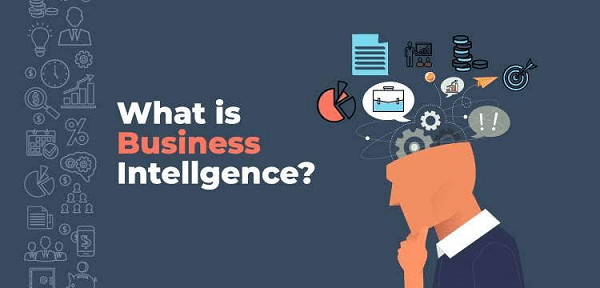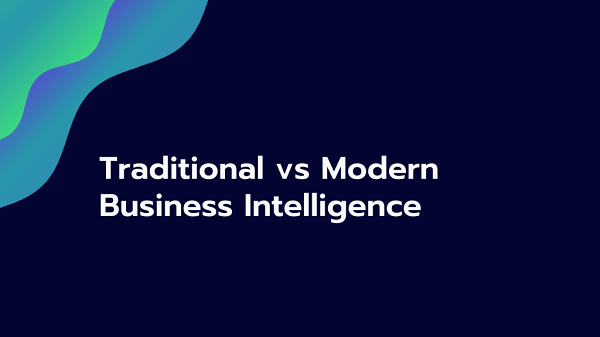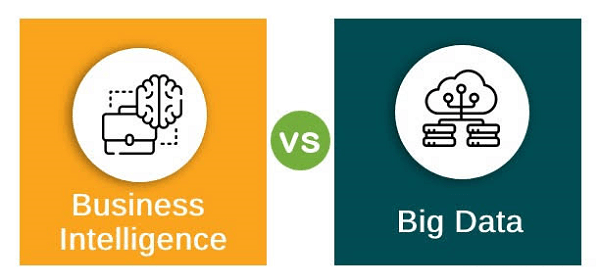What Is Business Intelligence (BI)? Types, Benefits, and ExamplesWhat is Business Intelligence?Business intelligence (BI) is the term used to describe the procedural and technological framework required to gather, store, and analyze the data generated by a company's operations. 
Business intelligence integrates business analytics with data mining, data visualization, data tools and infrastructures, and best practices to support businesses in making more data-driven choices. When you properly comprehend your data and use it to implement change, eliminate inefficiencies, and respond quickly to supply or market changes, you can tell if your company has a need for modern business intelligence. Modern BI solutions promote flexible self-service analysis, regulated data on dependable platforms, empowered business customers, and speed to insight. It is important to remember that the interpretation of BI has evolved; however, it has a long history. The 1960s saw the emergence of traditional business intelligence as a means of information exchange between businesses. The terms "business intelligence" and "computer decision-making" models were first used in 1989. This led to the introduction of BI. Understanding Business Intelligence (BI)The idea that managers with incorrect or partial information often make poor decisions compared to having useful knowledge is what led to the need for BI. Financial model developers understand this as a "garbage in, trash out" concept. BI seeks to solve this problem by analyzing recent data, best shown on a dashboard with quick metrics designed to allow better judgments. Special ConsiderationsFor BI to be effective, the accuracy, timeliness, and volume of data must all be increased. Such needs entail expanding the methods for gathering information that is not currently being recorded, verifying the accuracy of the information, and organizing the data in a way that allows for thorough analysis. However, in reality, businesses sometimes have complex data sets that could be more organized or in various forms, making it difficult to acquire and analyze. Thus, software companies provide unique and effective intelligence solutions to businesses to enhance their knowledge and allow them to derive better results from the data. These are enterprise-level computer programs made to integrate analytics and data for businesses. Data scientists still have to balance the trade-offs between presenting depth and speed, even if software solutions are improving and getting more complex. Companies typically try to collect all the emerging big data insights. Still, data analysts can often filter sources to obtain data points that might indicate the overall health of a business or business sector. This can speed up reporting and reduce the quantity of data that must be collected and processed for analysis. How does Business Intelligence work?Businesses and organizations have goals and queries. To answer these questions and track success against their objectives, they gather the pertinent data, analyze it, and decide which actions to take. On the technical side, raw data is extracted from business systems. Data is processed and kept in files, apps, warehouses, and the cloud. Analysts get access to the data once it has been saved and may start evaluating it to propose solutions to business challenges. Another function of BI platforms is data visualization tools, which present data to significant stakeholders or decision-makers as charts or graphs. Types of BI Tools and SoftwareThere are many different types of BI software and solutions. Let's quickly review several general BI solution categories:
Benefits of Business IntelligenceThere can be many factors that can influence whether a business should use BI or not. BI is frequently utilized to help common business activities such as hiring, compliance, output, and marketing. Identifying company segments that do not benefit from data is challenging because BI is a fundamental business value. A few benefits that firms may enjoy after implementing BI into their business models include faster, more accurate reporting and analysis, higher data quality, enhanced employee satisfaction, lower expenses, increased revenues, and the ability to make better business decisions. For instance, suppose you are in charge of setting up the production schedules for a number of beverage manufacturers, and the sales are increasing significantly month over month in a certain area. In such a case, you can immediately authorize more shifts to ensure that your company can meet the required demand. Similarly, you may stop the same production if sales decline due to cooler weather conditions than in normal summer. This production management is just one example of how correctly applied BI can increase revenue and save costs. Examples of BILowe's CorpOne of the first big-box retailers to use BI tools was Lowe's Corp, which runs the country's second-largest home maintenance retail chain. In particular, it has relied on BI technologies to streamline its supply chain, examine items to spot fraud, and address issues with group shipping fees from its stores. Coca-Cola Bottling CompanyThe daily manual reporting procedures used by Coca-Cola Bottling had a drawback: they limited access to real-time revenue and operational data. But the business optimized the procedure and saved 260 hours a year by swapping out the manual procedure with an automated BI solution. With only a few clicks, the organization's staff can now swiftly monitor indicators like the execution of operations, budget, and profitability. How do BI, business analytics, and data analytics work together?Business intelligence encompasses both data analytics and business analytics. Nevertheless, they are only used sparingly throughout the procedure. By analyzing data, BI helps people make decisions. Data scientists look at the nuances of data to uncover patterns and predict future trends using sophisticated statistics and predictive modelling. Analytics of big data asks, "Why did this happen, and what could happen next?" Several BI models and algorithms are used by business intelligence, which transforms the output into language that can be used for action. According to Gartner's IT glossary, business analytics includes data mining, predictive analytics, applied analytics, and statistics. To put it briefly, firms employ business analytics as a part of their overall business intelligence strategy. BI is made to respond to certain inquiries and offer quick analysis for planning or decision-making. Companies may utilize analytics to enhance iteration and follow-up inquiries over time. Because answering one question will always result in more inquiries and iterations, business analytics shouldn't be linear. Modern business refers to the cycle of analytics as the process through which organizations employ analytics to adapt to changing demands and questions. Difference between Traditional BI and Modern BI
The classic business intelligence paradigm was the foundation for earlier business intelligence technologies. This was a top-down strategy where the IT department was in charge of business intelligence, and most, though not all, analytics concerns were addressed by static reports. This meant anyone who had a question about a report they had received would have to start the procedure again from scratch since their request would be pushed to the back of the reporting line. Because of this, reporting cycles were lengthy and annoying, and employees could not use the most recent facts when making judgments. Modern corporate intelligence is accessible and engaging, however. While IT teams continue to play a significant role in controlling access to data, many levels of users may quickly produce reports and personalize dashboards. Users can view data and find the answers to their queries with the right tools. Categories of BI AnalysisThe three primary BI analysis categories cover various needs and use. Prescriptive, descriptive, and predictive analytics are these three categories. Predictive analytics builds models of future outcomes based on previous and present data for planning purposes. Descriptive analytics uses historical and current data to look for patterns and relationships. Prescriptive analytics uses all the relevant data to answer the question, "What should my firm do?" Business Intelligence PlatformsThe analysis process is streamlined by several self-service business intelligence tools and platforms. This makes it easier for people to observe and understand their data because they need more technical expertise to delve into the data. With various BI systems, it is possible to create custom dashboards for different user levels, data visualization, and ad hoc reporting. We have given our suggestions for assessing current BI systems so you may pick the best one for your business. Data visualization is one of the most popular techniques to display corporate intelligence. BI DashboardsDashboards enable the aggregating and visual display of complex data in one location and are one of the highly useful BI tools. These dashboards may be used for various objectives, including complicated analysis or stakeholder buy-in. The difficult part is creating the ideal dashboard for your requirements. A BI dashboard's essential attributes are:
BI and Big Data
The relationship between BI and big data is important to consider because as data environments evolve, data collection, storage, and analysis become more complex. What exactly is big data, which has recently become a bit of a buzzword in the industry? Data experts characterize this using the "four V's", namely volume, velocity, value, and variety. These four characteristics outline and distinguish large data. People frequently cite volume as the key defining characteristic since storing large amounts of data for extended periods is extremely difficult, and the amount of information is always growing. As you might expect, this is significant for BI since systems for BI must keep up with the rising demands placed on them as organizations produce more and more data yearly. A solid platform will expand as needs arise. But as big data evolves, displays and data sources can become obsolete if they are not kept up to date. The Future Role of Business IntelligenceCorporate intelligence is always changing to stay up with business demands and technological advancements. Thus, to keep consumers informed about new advancements, BI analysts annually identify current trends. They also identify how artificial intelligence and machine learning will evolve and how businesses can integrate knowledge learned from these technologies into a larger BI strategy. To become more data-driven, businesses will collaborate and exchange data more. Using data visualization to collaborate across departments and units will become even more crucial. The field of business intelligence is just briefly introduced in this topic. Various sectors, like retail, insurance, and the oil industry, have embraced BI, and more are following the trend. BI systems change to accommodate new technology and user creativity.
Next TopicWorld Bank Definition
|
 For Videos Join Our Youtube Channel: Join Now
For Videos Join Our Youtube Channel: Join Now
Feedback
- Send your Feedback to [email protected]
Help Others, Please Share









